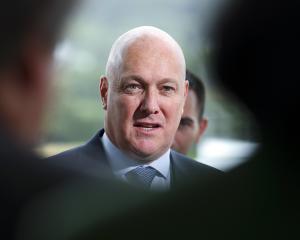
The National Party’s revolving leadership door in recent years has been fascinating to watch from afar but unlikely to have caused joy for those within the party and supporters without.
It should be remembered too Labour went through its own leadership woes after the steady hand of Helen Clark was lost in 2008 after 14 years in the top job.
Phil Goff held on for an uninspiring three years and then there were the Davids (Shearer, Cunliffe and briefly Parker as an interim), before Andrew Little.
He lasted more than two years before having the nous to realise Labour would do better with someone else, handing the job to Jacinda Ardern.
It was a bold move in an election year, but it paid off.
It is difficult to see the current ferment in the Green Party around co-leader James Shaw in the same light. Last weekend around 30% of party members sought to open nominations for his co-leadership position, more than the 25% necessary to trigger such a move.
The party no longer must have a male/female leadership team, having altered its rules to require one female leader and one of any gender, but one leader must be Maori.
An initially discombobulated Mr Shaw has put his hat in the ring again, but at the time of writing nobody else has.
It is understandable those who want a change at the top would want it done this year rather than in an election year.
This would allow someone new to establish themselves in the role and give time for any upset within the party to hopefully dissipate as everyone got on with campaigning. But to make this move now, surely it is necessary to at least have someone lined up willing to do the job, someone with a reasonable chance of winning.
Maybe hopes were being pinned on the charismatic Chloe Swarbrick, although she has consistently shrugged off suggestions of leadership aspirations in the past and has ruled herself out since the weekend.
It may well be she sees she can be more effective without the shackles and extra responsibility of leadership. Perhaps those who are keen to be rid of Mr Shaw from leadership because of the perception he has been weak on climate change were under the impression he would be removed from the climate change portfolio if he lost the leadership. Prime Minister Jacinda Ardern has made it clear that will not be the case and that the role was designated to the person, not the position.
Anger at Mr Shaw for not being bold enough on climate change is naive. The Green Party chose to accept ministerial roles offered, knowing Labour had a huge majority in the House and that in a policy shoot-out Labour would always win. The question should be whether Labour is willing to go far enough. Mr Shaw has spoken of his frustration about the pace of change.

However, within the party is there enough emphasis on greenness, or has it been side-lined by concentration on social justice ideology?
Whatever the outcome of the leadership vote, that is something on which 2023 voters need clarity.
And another thing
National leader Christopher Luxon has added another gaffe to his growing collection, having to explain a social media post saying he was in Te Puke when he was holidaying in Hawaii.
Mr Luxon has much to learn about perception, including whether preaching about the impact of the cost of living when he is fresh from an overseas holiday will seem out of touch to struggling families.












